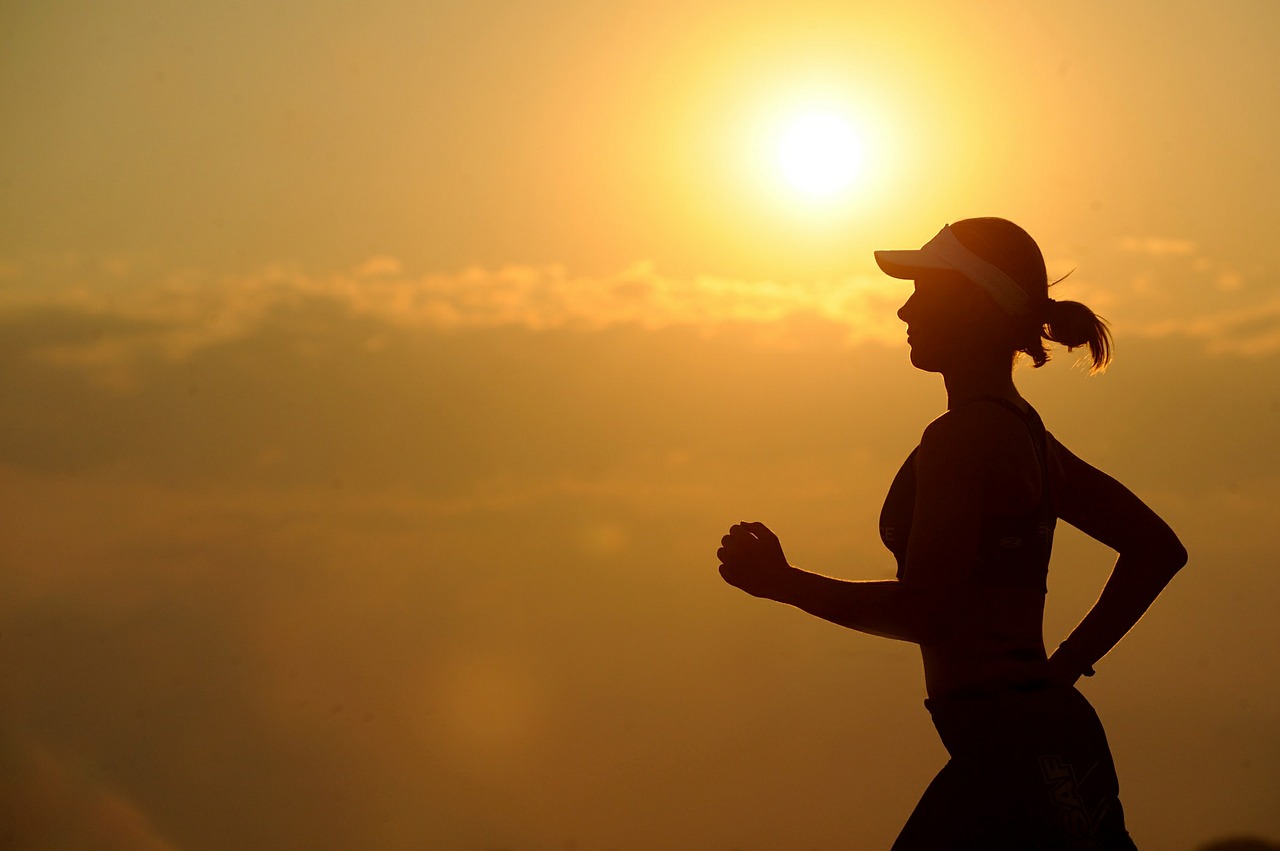
Chafing & Blistering
Ever been (quite literally) rubbed the wrong way?
That’s chafe, a common skin irritation similar to blisters that is caused when your skin is repeatedly rubbed against something else. It’s not a serious injury, but it can be incredibly painful and can put you out of action for a day or two. And left untreated, you can also run the risk of infection.
The bad news? It can happen just about anywhere on your body.
The good news? It’s totally preventable!
So without further ado, here’s the good, the bad, and the ugly – your complete guide to chafe.
The causes of chafing
If you’ve ever taken a walk back from a beach in a wet swimsuit, you might have experienced a universal discomfort – it could be your thighs rubbing together, or it could be a seam rubbing along your underarm or groin.
The friction caused by the two things rubbing together irritates the skin until it is left chapped, blistered, red and raw, producing a painful stinging or burning sensation. That’s chafe – friction’s best friend.
Chafe happens when skin meets skin, or skin meets fabric. Any place on your body where skin comes in close contact with other skin or fabric is a potential chafe or blister hot-spot.
Does chafing mean I’m fat or overweight?
One of the most common misconceptions about chafing is that it is a result of being fat or overweight. This is simply not true – because chafing can happen to anyone, and can occur on any part of your body.
What areas of the body are most prone to chafing?
Often it’s the most sweaty areas that are particularly prone to chafe – especially your thighs, groin and underarms. Athletes and sportspeople will know this all too well – because chafe and exercise often go hand-in-hand.
Women may also suffer chafe under their breasts or where their bra sits, while guys can be susceptible to ‘runner’s nipple’. (That’s when the skin on the nipple is rubbed so raw it will often bleed – ouch!)
Chafing Prone Areas (Diagram)
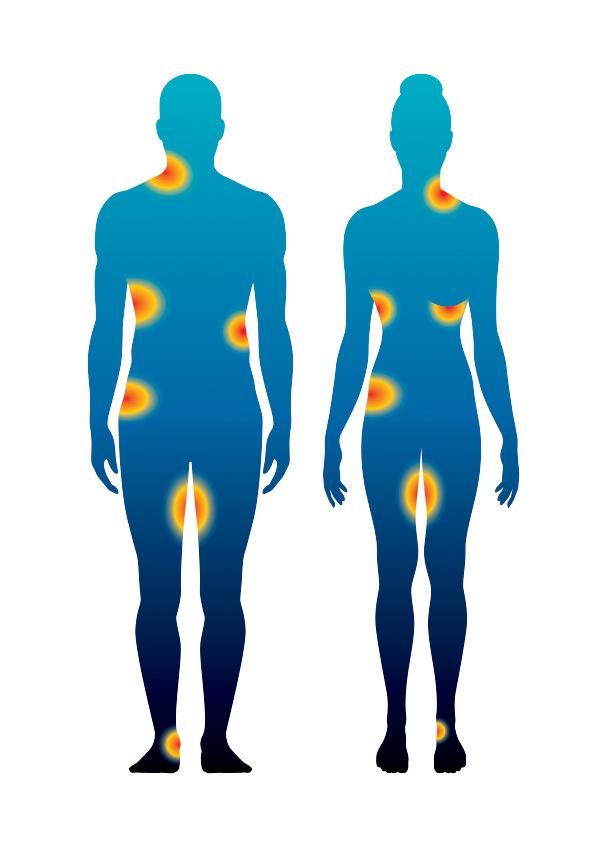
What environmental conditions cause chafe?
Chafe can occur any time, but it thrives in moisture.
Your sweaty areas (thighs, groin, underarms) provide the perfect conditions – as once your sweat dries it crystalises into salt on your skin, increasing the chance of friction and therefore chafe.
Moisture in the environment does the same thing – you’ll notice humidity or rain makes you more prone to chafe when the water traps itself between your clothing and your skin.
You’re at risk from chafe if:
- You’re a salty sweater
- You’re dehydrated
- You have sensitive skin
- You work out for long periods of time
- Your clothing is worn or has bad seams
- You exercise in the rain or humid conditions
What to wear to avoid chafing
Believe it or not, loose-fitting clothing is actually more likely to rub against your skin than clothes that are close-fitting. Don’t go too tight though, as your clothes should allow you to move freely and give you a bit of air flow.
The best thing you can wear to minimise chafe is a synthetic fabric. That’s why you’ll often see athletes in lycra or polyester – the fibres are essentially plastic, so they’re nonabsorbent (they don’t take on any moisture). Synthetic fibres are great because they minimise friction, are lightweight, and they also dry quickly.
Avoid cotton at all costs – because it soaks up moisture and will stay wet for longer than most fabrics.
Pro-tip: If you’re really looking to minimise friction and chafe, your best option is to choose clothes that have very few seams, flat seams, and small flat stitches.
How to prevent chafing
Ever heard the saying, ‘prevention is the best cure’? It’s absolutely true of chafe.
Use an anti-chafe lubricant on any problem areas before you work out. Many people use petroleum jelly-based products like Vaseline, or talcum powder – we, of course, use a natural alternative not only to prevent chafing, but also to heal the skin rapidly if damaged.
Regardless of what you use, the idea is to lubricate your skin so that if – for example – your thighs end up rubbing together, they’ll slide past each other and won’t create any friction. (You could also try wearing lycra shorts underneath your workout shorts – see what to wear to avoid chafing above)
Anti-chafe lubricant options:
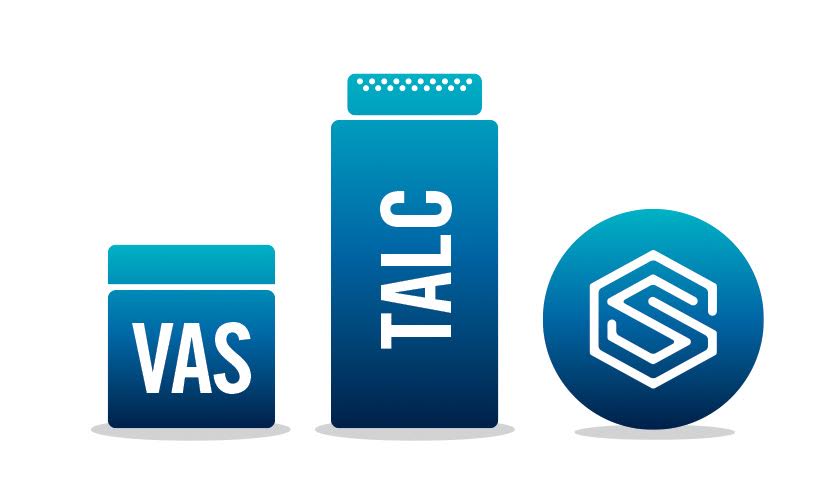
You can also help avoid chafing by:
- Staying hydrated: Drink liquids before, during, and after lengthly periods of exercise. Being hydrated means your body can keep sweating – when sweat production stops, the drying salt crystals from your sweat can cause your skin to chafe even more.
- Staying dry: Wet skin will increase your chances of chafing.
How to treat chafed areas
You never really know where you have chafed until you take a shower – it feels a bit like lemon juice in a paper cut!
Red and raw, your chafe may be swollen, or even bleeding – so make sure you treat it with care, like you would an open wound (because that’s what it is!)
Instructions for treating chafed areas:
Follow these simple directions to deal with chaffing:
- Start by gently cleaning the area with warm water (hot water will dry out your skin). Avoid soap as it may further irritate your skin.
- Dry the area thoroughly and apply a topical cream. Ideally, choose one that will double as both a healing agent and lubricant to keep you moving – we recommend Goodsport because it uses New Zealand Manuka oil to protect and repair your skin.
- Allow yourself a little time to heal – hang up your shoes and have a well-deserved rest day! You probably deserve it.
The 3 Steps to chafing relief
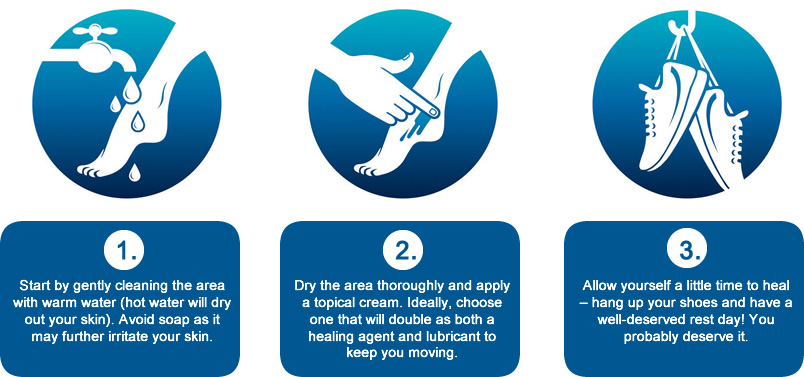
Chafing summary:
Don’t let red, raw or sore blistering skin get in the way of your exercise, remember:
- Chafing is caused by friction (avoid friction and avoid chafe!)
- Chafing does not mean you’re fat or overweight
- Sweaty areas are most prone to chafe
- Wet weather and moisture also increase your risk of chafing
- Choose medium fit, synthetic clothing to minimise risk of chafing
- Apply an anti-chafe product before you work out
Too late? Follow our 3-step guide to repairing chafed skin above.
Anything to add to this page? Contact us if there’s something you’d like to see included above.
Stop chafing with GoodSport’s 100% natural anti-chafe
What do our customers say?
 “I was lucky enough to try Goodsport Anti-chafing sports cream. I normally chafe when running in extreme conditions, cold and rainy or hot and dry. The 27 degrees+ hot and dry conditions were superbly suited for chafing. I was delightfully surprised I didn’t get any chafing at all. Goodsport has meant I have one less thing to worry about.”
“I was lucky enough to try Goodsport Anti-chafing sports cream. I normally chafe when running in extreme conditions, cold and rainy or hot and dry. The 27 degrees+ hot and dry conditions were superbly suited for chafing. I was delightfully surprised I didn’t get any chafing at all. Goodsport has meant I have one less thing to worry about.”
Dave Ridley – www.daveridley.com

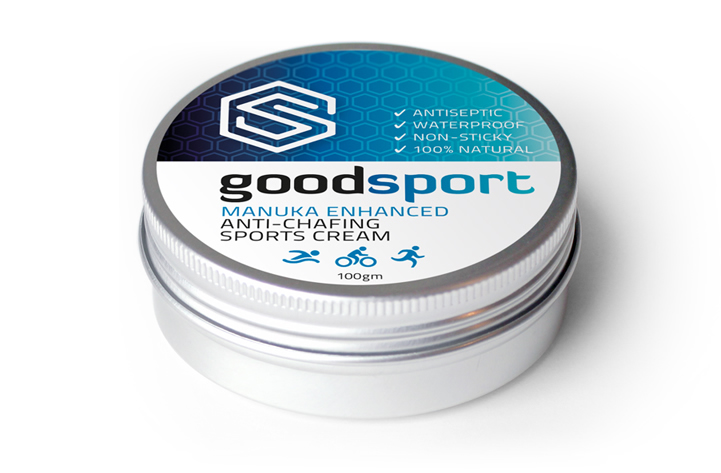
Ryan Pohl
Stacey Plowman
Pingback: How to Treat Chafing in The Groin Area | StopChafing
Pingback: How to Prevent Chafing: Prevention and Cures for the Hiker’s Curse - My Open Country
Anonymous
Stacey Plowman